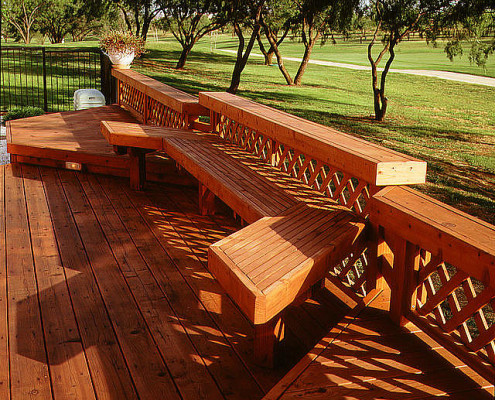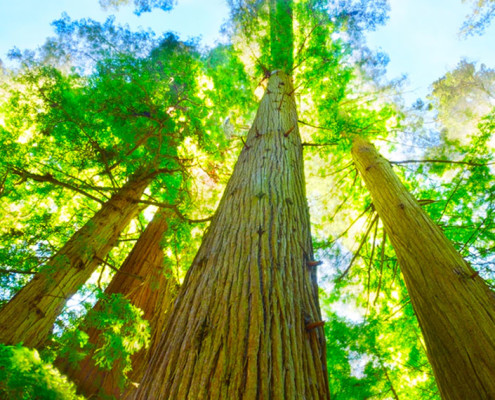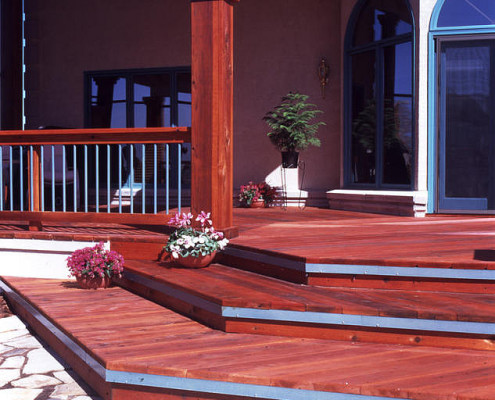Redwood decks create a natural focal point for outdoor living environments. As walking surfaces and entertaining areas, decks organize large spaces and reclaim irregular or sloped land. Redwood stairs and walkways provide attractive footpaths.
Redwood decks range from simple platforms to multilevel projects using a variety of shapes and amenities. Openings in the deck surface can allow for plantings and incorporate elements of outdoor furniture. Decking may be parallel or diagonal.
Redwood’s superior stability also permits the use of parquet patterns. Concrete footings provide the best support for deck framing. Tops of footings should extend 6 inches above ground and should be pitched outward to prevent water collection and inhibit decay and insects. Deck framing tables shown below are for single spans of non-stress graded Construction Heart and Construction Common redwood. Design will support a uniform live load of 40 pounds/square foot with deflection limited to L/240. Concentrated loads of planters, spas and other heavy objects may require additional joists and larger beams. Local building codes should be consulted regarding structural regulations. Design loading, with deflection limited to L/I 80, sets a maximum two-foot span for decking. Provide 1 /8 inch minimum space between boards, and center all large knots and butt-jointed board ends over joists.
Overhead structures of redwood give the finishing touch of shelter to comprehensive landscaping, creating shade and spatial definition. Post-and-beam frames support pitched or horizontal rafters, spaced for varying degrees of shade or to hold finer scale screening. Canvas or plastic coverings provide rain protection. In some situations permanent roofing is appropriate. Vertical trellis panels offer protection from sun and wind.
Because redwood is naturally stable it is ideal for planters, seating and tables. These elements can be movable or built-in. Planters use Construction Heart or other all-heartwood grades of redwood where there is soil contact. Large planters, with more than 1 foot of soil depth, may require 2 inch boards. Seating is often as simple as providing 2 x 8 or 2 x l0 caps at low walls or planters. Platform or backed benches may be free- standing or components of other elements. For seatboards, use vertical grain redwood to minimize splintering.
Redwood garden grades create pleasant fencing with excellent stability and durability. Fences of various heights and many patterns can be designed to screen, protect, divide, decorate, shelter or shade. Whether they are distinctive or subtly blended into an overall design, most fences serve many purposes. The “good neighbor” fence with its finished appearance on both sides, enhances the value of two properties. “Attractive nuisance” fences, such as those required around swimming pools, provide barriers. Retaining walls, shelters, planters and benches can be integrated with fence construction.











